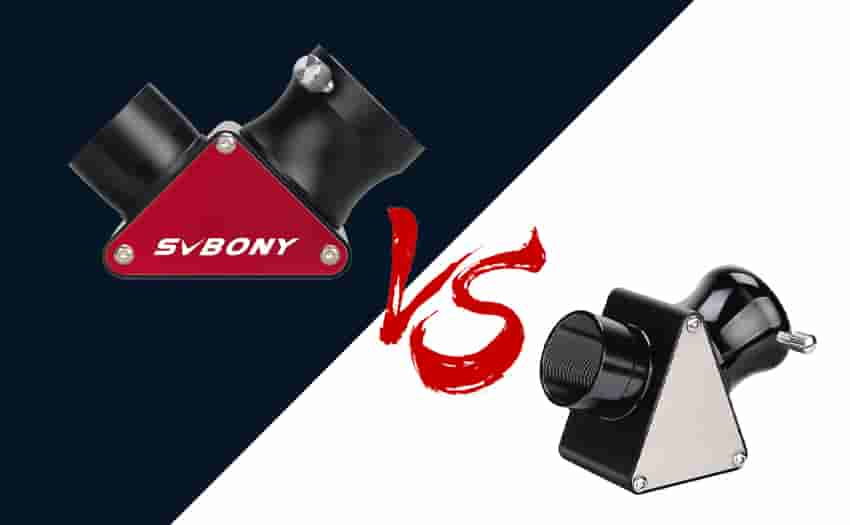Table of Contents

What diagonal should I choose, Prism or Mirror type?
Many beginners will confuse by so many kinds of diagonals on the market, so which is better, the 45, 60, or 90°diagonal? What’s the difference? Which should I prepare for my Astronomy observation? People keep talking the 90° mirror is definitely better, is it really so?
1. Introduction
The common pros and cons: improve the comfort when doing observation, correct the image orientation. Both will reduce the light intake more or less.
(1) The Prism diagonal: 90°-angle prism, pentaprism, or an Amici roof prism including a 90º angle (like an ordinary star diagonal) and with a 45º angle. Such prisms are often used in spotting scopes for terrestrial viewing, mostly with a 45º angle.
The advantage includes no light scattering, easier to clean, enhance contrast, and no optical degradation over time. Also, the most important part is it will show the image right vertically and horizontally and provide a comfortable viewing angle, which is important for landscape and long-time observation.
SV222 1.25" Metal 45 Degree prism Diagonal
The defects are it induces the Chromatic Aberration, which is apparent in today's popular short-focus telescope.
(2) The mirror diagonal: also called star diagonals, creates an image correctly oriented vertically but is reversed left-to-right horizontally.
The advantage more cost-effective at the same level and creates no color errors.
The shortcomings will cause light scattering if the reflective coating can't appropriately be applied. The optical quality cuts down along time as the coating surface may oxidize. The new Dielectric Diagonal like SVBONY SV188P can improve this question, especially for short-focal length instruments.
1.25" SV188P Dielectric Diagonal for Refractor
2. How to select?
2.1 Weight: the mirror kind wins. ( But it can't be so sure as the metal is widely applied)
2.2 Coating: The transmittance really matters as you are watching very dark distant objects, and coating can improve that.
(1) nice coating

(2) Low-cost blue coating

(3) With no coating

2.3 Exquisite workmanship-Anti-drop groove and chamfer

3. The images were taken by SV188P and SV138



There are no customer reviews yet . Leave a Reply !